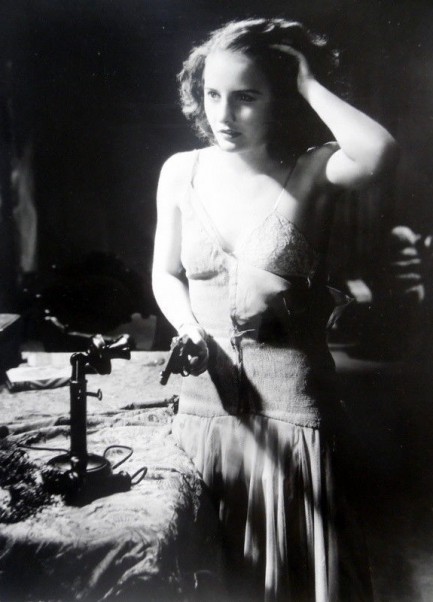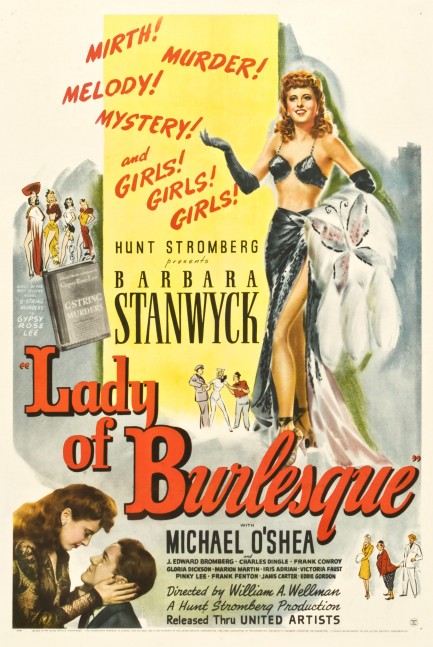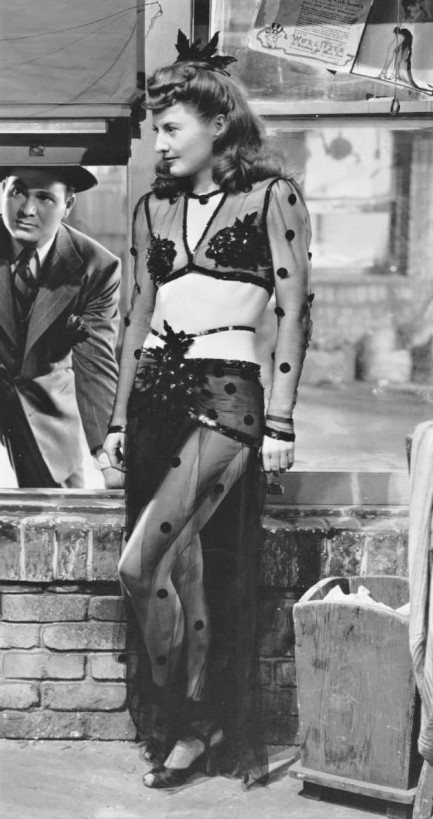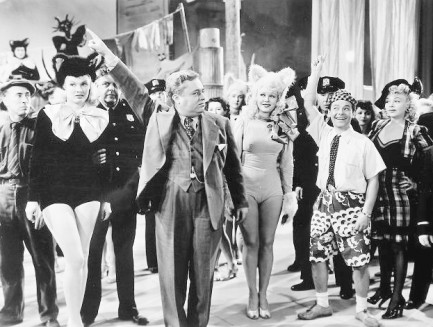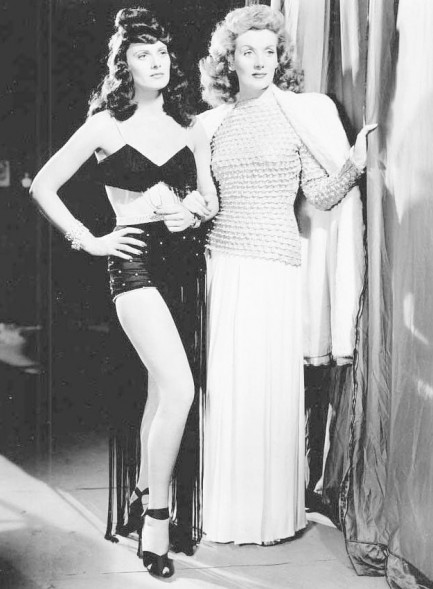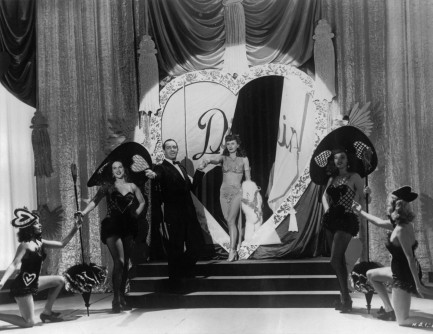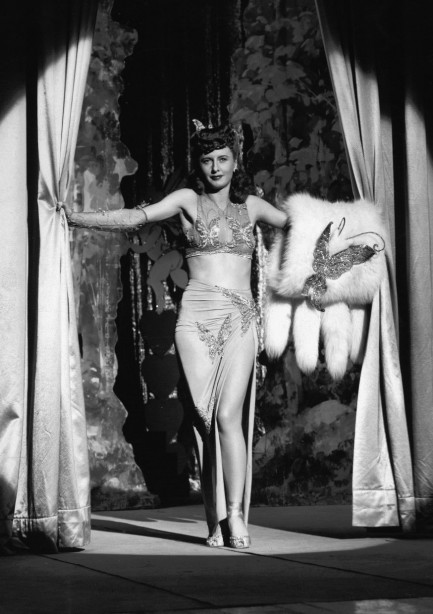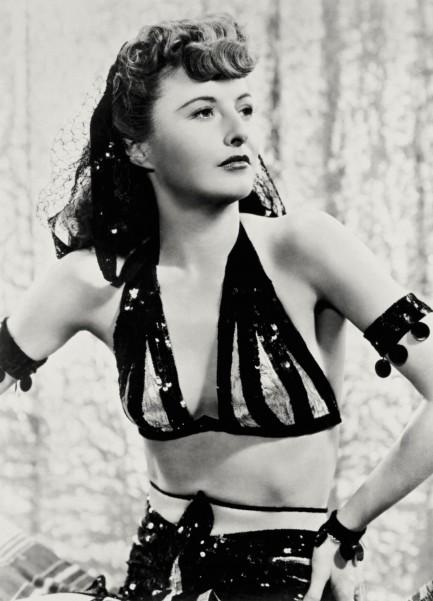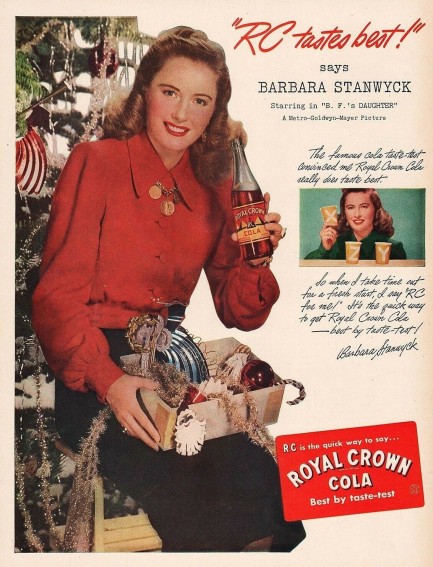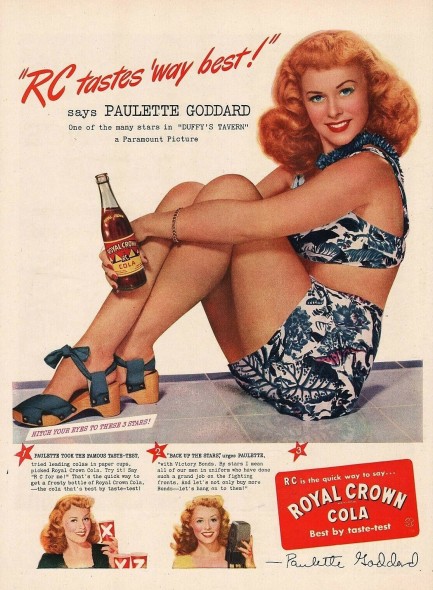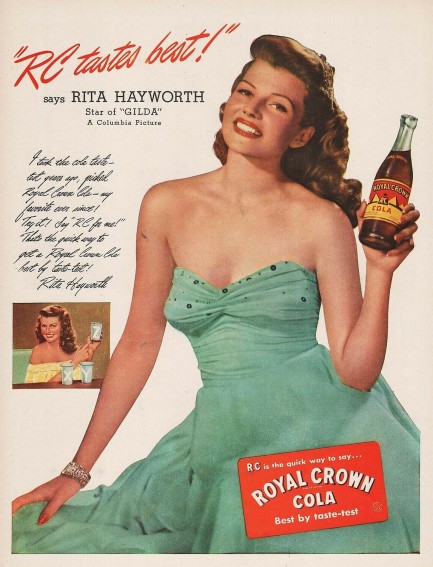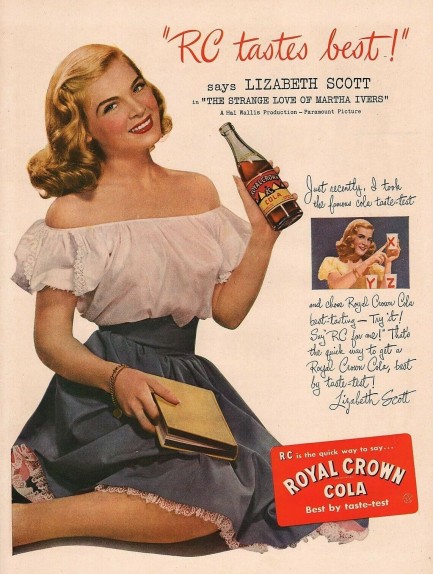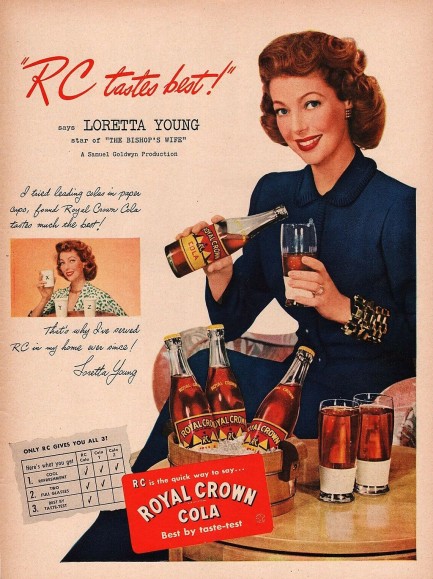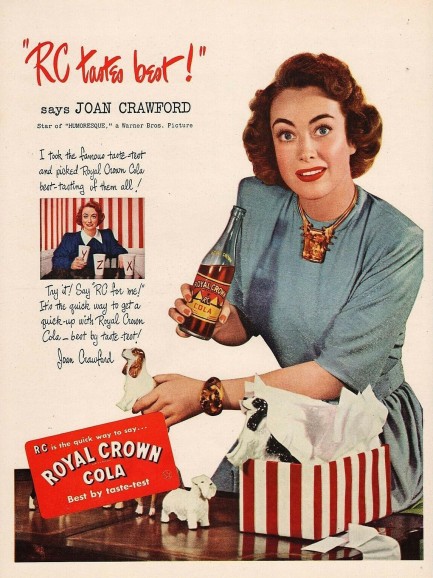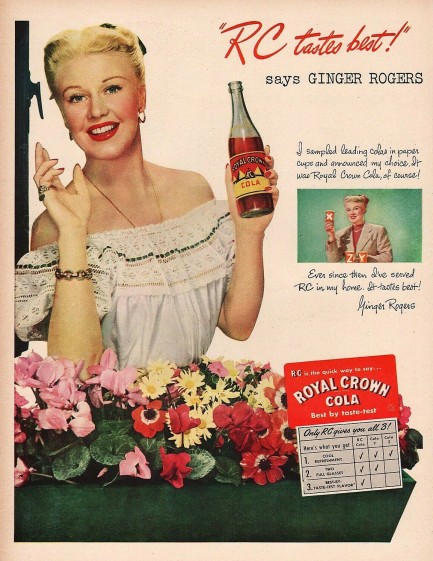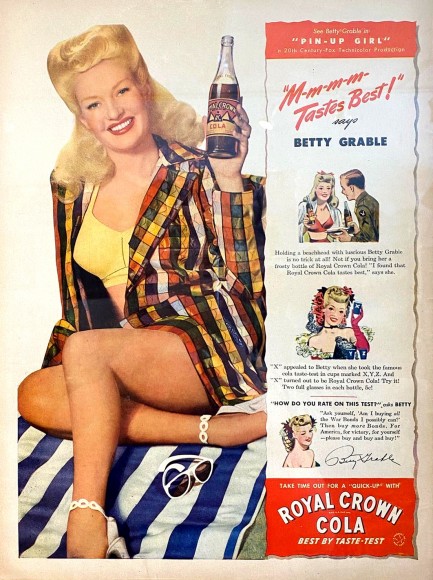 I'm conflicted. You strangled my husband, but you're the first man who does what I want without me nagging him.   
Above: a U.S. six sheet poster and zoom followed by an insert poster for the all-time film noir classic Double Indemnity. If you don't like this one, you don't like movies. It premiered in the U.S.—at a special event in Norman, Oklahoma of all places—today in 1944. We shared its West German poster here, joked about one of its classic sequences here, wrote about its modernized remake Body Heat here, and shared its Australian poster and covered the film in detail here.
 She must be more of a coffee person. 
This cover for The Bitter Tea of General Yen, which was came in 1949 from Popular Library, could have been painted by Rudolph Belarski. It's funny we're guessing, because we just said his art is instantly recognizable. Oh well. Usually he managed to place his signature where it wasn't easily covered by publishers, but not always. He was collaborating with Popular Library a lot during this period, and it looks like his work, but without his signature we can't say it's him—or really anyone else. But while the cover is officially by an unknown, it does fit into our collection of women being toted hither and yon on mid-century paperbacks. You can see those here. The novel was first published long before the paperback—way back in 1931. The story is set in China, and follows Megan Davis, who has traveled there during a time of civil war to marry a medical missionary. Turbulent circumstances lead to her being assaulted by a crowd and presumed dead. But she's actually rescued and placed under the protection of the anti-communist General Yen Tso-Chong of the book's title. The general plans to take the utmost care of Megan because her safe return will be a propaganda coup. But while in his villa he and Megan discuss their different cultures, religions, politics, and views of current events:
“In capturing the city of Nanking the troops of General Chen Chien got a little out of hand. War, you know, does not bring out the best qualities of tolerance and self-control; that is one reason why we Chinese are so unfitted for it.”
“But what was the incident?”
“A number of people were shot and some were killed, missionaries largely, Doctor Williams of the Nanking College, some ladies, the British Consul too, I believe.”
“Shot by Chinese?”
“By troops, yes.”
“But that is an outrage!” cried Megan, overwhelmed with anger. “We are not at war with you!”
“No? Well, at any rate your gunboats, in retaliation, fired on the unarmed, civilian population of Nanking, killing hundreds. But after all, why should you and I talk about it?”
“I don’t believe they fired on the civilian population, or if they did, they must have been forced into it.”
The General shrugged his shoulders.
That's a very appropriate exchange for our current times, but Megan and Yen's verbal jousting is interesting only to a point. In the end Zaring Stone is restrained enough to leave the politics unresolved, and brings the book to perhaps the only conclusion that fits. Now that you know the plot, you may be pondering the cover and asking yourself, "Who's the studly Anglo carrying the damsel in distress?" He doesn't exist in the narrative. It's General Yen who saves Megan. But Popular Library, we suppose, didn't want a Chinese man to star in that role on newsstands. Welcome to 1949.
In any case, Hollywood liked the 1931 hardback enough to adapt it into a 1933 film directed by Frank Capra, with the always amazing Barbara Stanwyck in the lead. We'd normally be leery of any movie made during that time depicting Chinese people (the title role is played by Danish actor Nils Asther), but you gotta give Stanwyck and Capra a shot, right? Like, it'd be neglectful of any cinephile not to watch it. So we'll let you know when/if we circle back to it.

 Not just another brick in the wall. 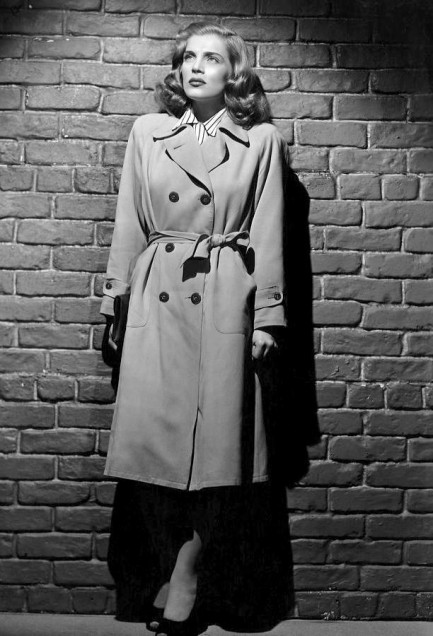
Lizabeth Scott, who you see above, has an outsize legacy in film history thanks to her appearances in several film noir landmarks: Dead Reckoning, I Walk Alone, Pitfall, and Too Late for Tears come to mind. She also appeared in Dark City, Paid in Full, The Racket, the bizarre British noir-adjacent melodrama Stolen Face, and others. The above promo image was made when she appeared in one of her best movies—the Barbara Stanwyck headlined film noir The Strange Love of Martha Ivers, from 1946.
 Listen, humans are a delicacy. They don't taste very good, but eating them is about status. 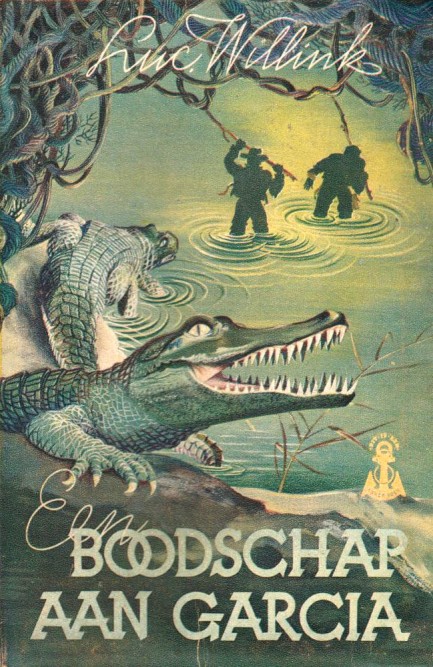
We wanted to revisit Dutch illustrator Piet Marée, whose style is so unusual it's very much worth another look. There's nothing biographical out there about him, as far as we can find. But we love his work. Een boodschap aan Garcia, which means, “a message to Garcia,” was written by Luc Willink, aka Lucas Willink, aka Clifford Semper, and published by Hague based Anker-Boekenclubin in 1950. How it relates to Elbert Hubbard's dramatized 1916 essay of the same name (which resulted in a 1936 Barbara Stanwyck movie) is unknown to us. We can tell you it's the same story—U.S. soldier Andrew S. Rowan carries a secret message from President William McKinley to Calixto García, a rebel hiding in the mountains of Cuba, before the Spanish American War. But the point here is Marée's art. We love it. We'll try to dig up more from him to share later.
 Stanwyck and MacMurray make a dangerous bet 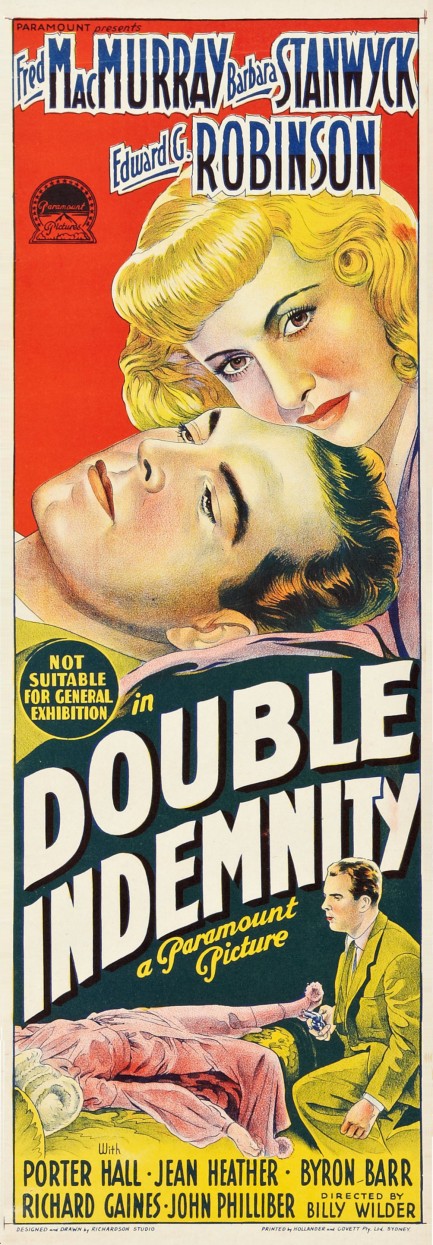
There are still, after all these years, important classic films we've never discussed in detail. We can now cross Double Indemnity off the list. The movie starred Barbara Stanwyck and Fred MacMurray, and we've looked at its West German poster, had fun with one of its promo images, and talked about its ingenious quasi-remake, but never actually gotten to the movie itself. Well, here we are, and now the question is can we tell you anything you don't already know? Possibly not, but let's start with the Australian daybill, which you see above. It isn't the usual poster you find online, so that's something, anyway.
The movie begins with MacMurray making a confession, then slides into flashback to explain his crime. He plays an insurance salesman for Pacific All Risk who quickly realizes that Stanwyck's interest in secretly purchasing a life insurance policy on her husband is for the purposes of murder and claimant fraud. He resists the scheme at first but Stanwyck convinces him. How? All we see are a few kisses but the answer has to be sex. McMurray is a guy who has experience with women and is so confident with them he's almost glib. He wouldn't agree to murder a guy just because someone is a good kisser.
Thus, temptation nudges him, unseen sex tips him over the edge, and from there he and Stanwyck are off and running with their murder plot. Eventually Stanwyck's husband is found dead on a train track, presumably after falling off the observation car of the Los Angeles-Santa Barbara express, and the crime seems perfect, except the insurance policy that will pay $100,000 brings a tenacious investigator into the picture. That would be Edward G. Robinson in another great performance, and he immediately latches onto an anomaly—Stanwyck's husband didn't file an insurance claim when he broke his leg weeks earlier. Why would a guy who had accident insurance not make a claim? Maybe he didn't know he had accident insurance.
Robinson's role and performance make the movie. He pulls on the single hanging thread that unravels the entire murder plot, and when it starts to come apart it does so almost too fast to believe. There's revelation upon revelation, even reaching years back to the time that Stanwyck's husband was married to another woman, and Stanwyck was that woman's nurse. It's this latter half that makes Double Indemnity a top classic—though make no mistake, it's a film noir clinic even from its first frames, in terms of visuals, structure, music, and direction from Billy Wilder. But when MacMurray's situation deteriorates so quickly and so uncontrollably in the last half, you almost experience the same vertigo and helplessness his character must feel.
Double Indemnity was nominated for seven Academy Awards, and as usual for the Oscars, was beaten in most of its categories by a film that ended up having far less influence—the Bing Crosby musical Going My Way. But time tells the tale. Nobody is calling Going My Way one of the best films ever made, but Double Indemnity was certainly a top ten film noir, and was influential far beyond its niche. The movie opened in the U.S. in the late spring of 1944 and finally reached Australia to dazzle and dismay audiences today, December 1, that same year. 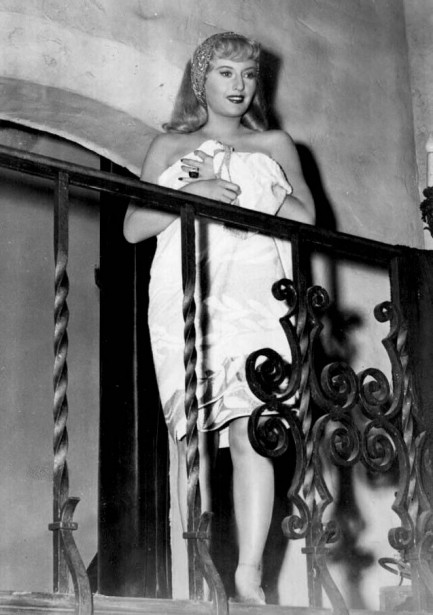 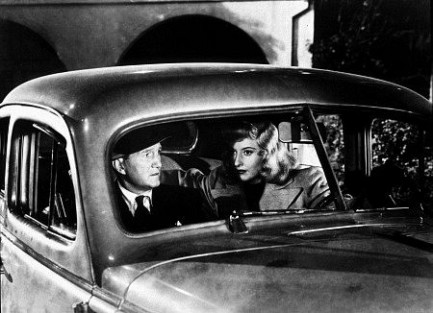  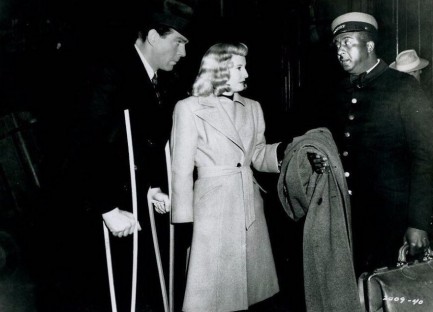 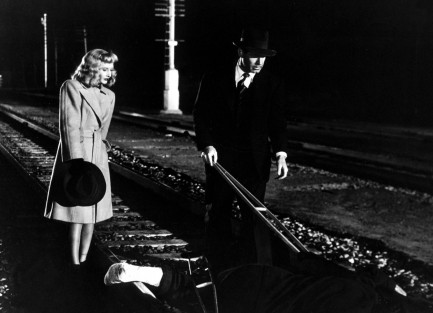 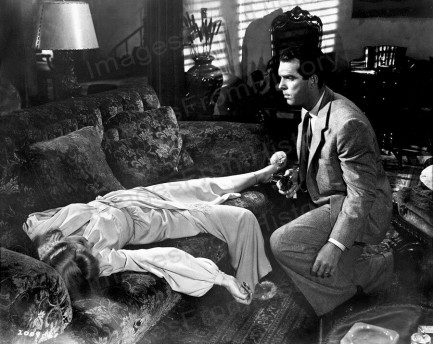 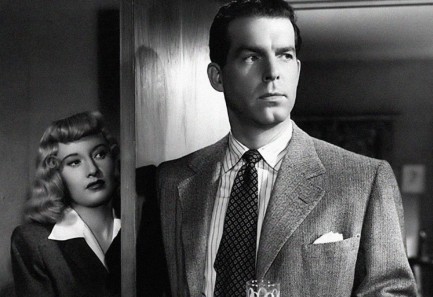 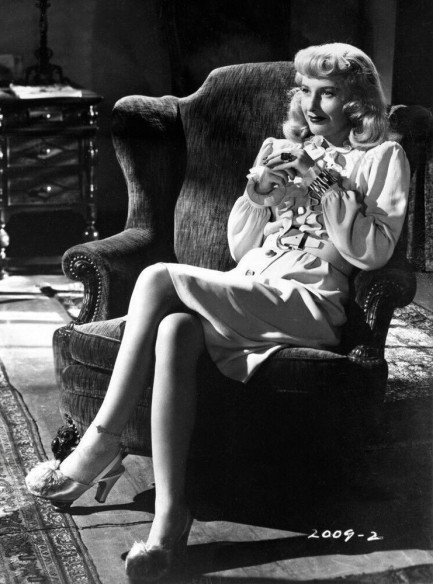
 Don't jump to conclusions. There's a perfectly reasonable explanation for this. Give me a minute to think of one. 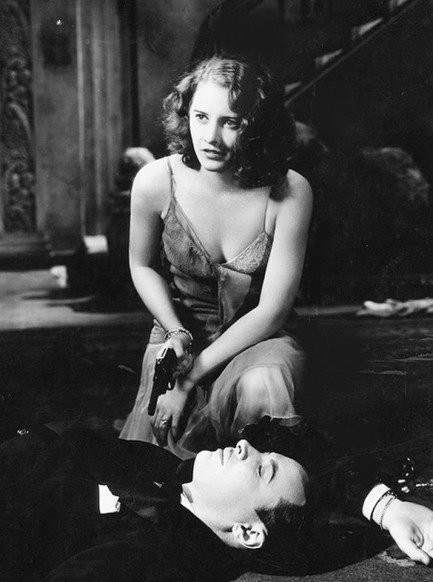
The talented and versatile Barbara Stanwyck appears in this promo image made for her 1929 pre-Code thriller The Locked Door, which she starred in at the age of twenty-two. It was her first credited role, and actually does involve her making up a flimsy story for a shooting, though not for the reasons you might assume. You'll have to watch the movie to find out more. And there's no reason why you shoudn't, because if Stanwyck wasn't the greatest actress in the history of Hollywood, she was pretty damn close. Below: she's still thinking.
 Murder most premeditated. 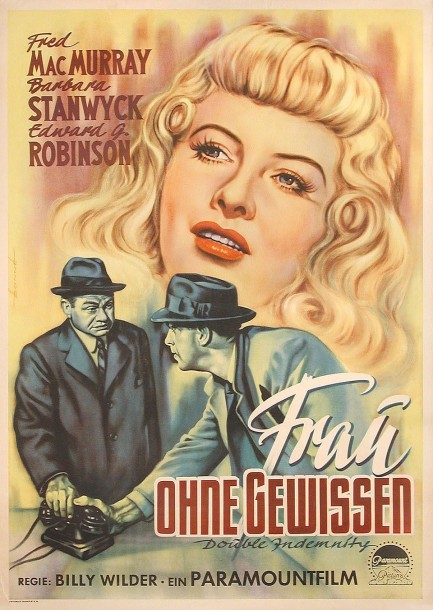
Above is a poster painted by German artist Heinz Bonne for the U.S. film noir classic Double Indemnity, starring Barbara Stanwyck and Fred MacMurray as lovers who try to pull off a murder and daring insurance fraud but may not be quite as smart or lucky as needed. We'll hopefully get back to Bonne a little later. Double Indemnity premiered in the U.S. in 1944, but made it to Germany—West Germany actually—as Frau ohne Gewissen, or “woman without a conscience,” six years later, today in 1950.
 Something old, something new. 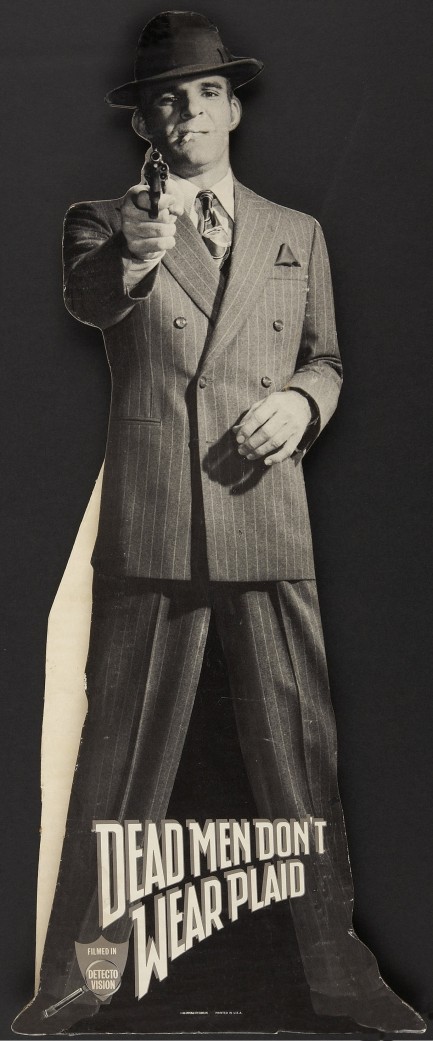
This is something a bit unusual. It's a life-sized promotional cardboard cut-out for 1982's film noir-sourced comedy Dead Men Don't Wear Plaid, which starred Steve Martin and Rachel Ward. We thought of this film recently due to Martin's new Agatha Christie-influenced television mystery series Only Murders in the Building, which we watched and enjoyed. We first saw Dead Men Don't Wear Plaid years ago, long before Pulp Intl. and all the knowledge we've gained about film noir. We liked it much better during our recent viewing.
If you haven't seen it, Martin uses scores of film noir clips to weave a mystery in which he stars as private detective Rigby Reardon. Aside from Ward, and director Rob Reiner, his co-stars are Ava Gardner, Humphrey Bogart, Burt Lancaster, Barbara Stanwyck, Ingrid Bergman, Lana Turner, Cary Grant, and many others, all arranged into a narrative that turns out to be about cheese, a Peruvian island, and a plot to bomb the United States.
The film's flow only barely holds together, which you'd have to expect when relying upon clips from nineteen old noirs to cobble together a plot, but as a noir tribute—as well as a satirical swipe at a couple of sexist cinematic tropes from the mid-century period—it's a masterpiece. If you love film noir, you pretty much have to watch it. Dead Men Don't Wear Plaid had its premiere at the USA Film Festival in early May, but was released nationally today in 1982. 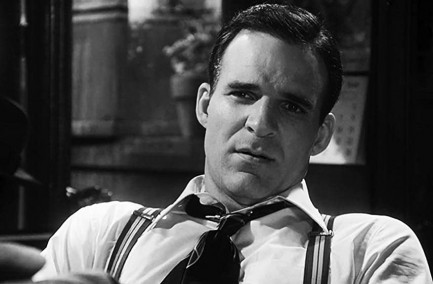

|
 |

The headlines that mattered yesteryear.
2003—Hope Dies
Film legend Bob Hope dies of pneumonia two months after celebrating his 100th birthday. 1945—Churchill Given the Sack
In spite of admiring Winston Churchill as a great wartime leader, Britons elect
Clement Attlee the nation's new prime minister in a sweeping victory for the Labour Party over the Conservatives. 1952—Evita Peron Dies
Eva Duarte de Peron, aka Evita, wife of the president of the Argentine Republic, dies from cancer at age 33. Evita had brought the working classes into a position of political power never witnessed before, but was hated by the nation's powerful military class. She is lain to rest in Milan, Italy in a secret grave under a nun's name, but is eventually returned to Argentina for reburial beside her husband in 1974. 1943—Mussolini Calls It Quits
Italian dictator Benito Mussolini steps down as head of the armed forces and the government. It soon becomes clear that Il Duce did not relinquish power voluntarily, but was forced to resign after former Fascist colleagues turned against him. He is later installed by Germany as leader of the Italian Social Republic in the north of the country, but is killed by partisans in 1945.
|

|
|

It's easy. We have an uploader that makes it a snap. Use it to submit your art, text, header, and subhead. Your post can be funny, serious, or anything in between, as long as it's vintage pulp. You'll get a byline and experience the fleeting pride of free authorship. We'll edit your post for typos, but the rest is up to you. Click here to give us your best shot.

|
|























